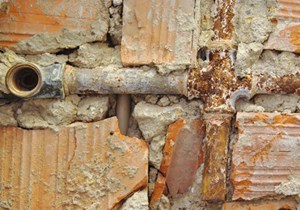Civil Engineers Give Wisconsin’s Infrastructure a “C”
MADISON, WI — The Wisconsin Section of the American Society of Civil Engineers (ASCE) have released the 2020 Report Card for Wisconsin’s Infrastructure, giving 13 categories of infrastructure an overall grade of a ‘C.’
This grade rates the state’s infrastructure in mediocre condition.
Water and energy infrastructure systems have received significant investments and are helping protect the state’s natural environment now and in the future, but the transportation network needs support.
Civil engineers graded aviation (C+), bridges (C+), dams (C+), drinking water (C+), energy (B), hazardous waste (B-), inland waterways (C-), ports (C+), roads (D+), solid waste (B-), stormwater (C), transit (D+) and wastewater (C-).
There were several notable successes in the report among the categories.
The Badger State is one of only a handful of states that has implemented stormwater (C) utilities to fund local stormwater programs.
Developers are required to implement stormwater best management practices and perform regular inspections to ensure permittees are meeting a pollutant reduction standard.
Wisconsin is a national leader in hazardous waste (B-) clean-up, with the state on its way to getting 28 of its 36 Superfund sites on the EPA’s National Priority List delisted. The Wisconsin Department of Natural Resources (DNR) also approved cleanups at more than 24,000 hazardous waste sites.
Energy infrastructure received the highest grade of a ‘B,’ with natural gas, nuclear and coal energy ensuring Wisconsin’s energy needs will be met through 2024.
Governor Tony Evers set an ambitious goal of net zero greenhouse gas emissions by 2050 and utilities have so far exceeded targeted greenhouse gas reductions.
Drinking water received a “C+” in the report, above the national average. The state’s 11,000 public drinking water systems could benefit from asset management programs to lower costs and reduce overall water usage, as the sector already needs $8.6 billion to improve aging pipelines. In 2018, utilities produced 186.7 billion gallons of water but lost over 26 billion gallons (14.2%) to water leakages, costing the state tens of millions in revenue.
Roads and transit received the lowest grades in the report, each earning a ‘D+.’
Of the state’s 115,000 miles of drivable roadways, more than one-third are in fair or poor condition. The Wisconsin Department of Transportation reports that an additional $180 million is needed per year over the next 10 years just to maintain current pavement conditions.
The report also includes recommendations to raise the grades, such as:
- Increase overall investment across all infrastructure sectors to ensure safe, resilient and reliable systems to maintain and improve the quality of life and economic health for the state’s residents.
- Continue the success of utilizing effective asset management practices, replicating sectors like major airports and bridges, to better assess condition and future investment needs.
- Create an integrated multi-modal transportation system, especially in urban areas across Wisconsin, to help improve congestion and provide more transportation opportunities.
- Incorporate transit initiatives into land use and transportation planning, including larger service areas, maximized accessibility, and linkages between jobs and supporting workforces.
- Deploy new technologies which can help bridge the gap between smart investment and overall infrastructure needs, encourage new methods of design and construction, and defray costs while providing for a better future for Wisconsin.
A full copy of the Report Card for Wisconsin’s Infrastructure is available at https://www.infrastructurereportcard.org/state-item/wisconsin/.
Related News
From Archive

- Glenfarne Alaska LNG targets late-2026 construction start for 807-mile pipeline project
- U.S. water reuse boom to fuel $47 billion in infrastructure spending through 2035
- $2.3 billion approved to construct 236-mile Texas-to-Gulf gas pipeline
- Major water pipe break in Puerto Rico hits over 165,000 customers
- Potomac River Tunnel project enters construction phase beneath Washington, D.C.
- Pennsylvania American Water launches interactive map to identify, replace lead water service lines
- Trump's tariffs drive $33 million cost increase for Cincinnati sewer project
- Utah city launches historic $70 million tunnel project using box jacking under active rail line
- Tulsa residents warned after sewer lines damaged by boring work
- Fatal trench collapse halts sewer construction in Massachusetts; two workers hospitalized




Comments